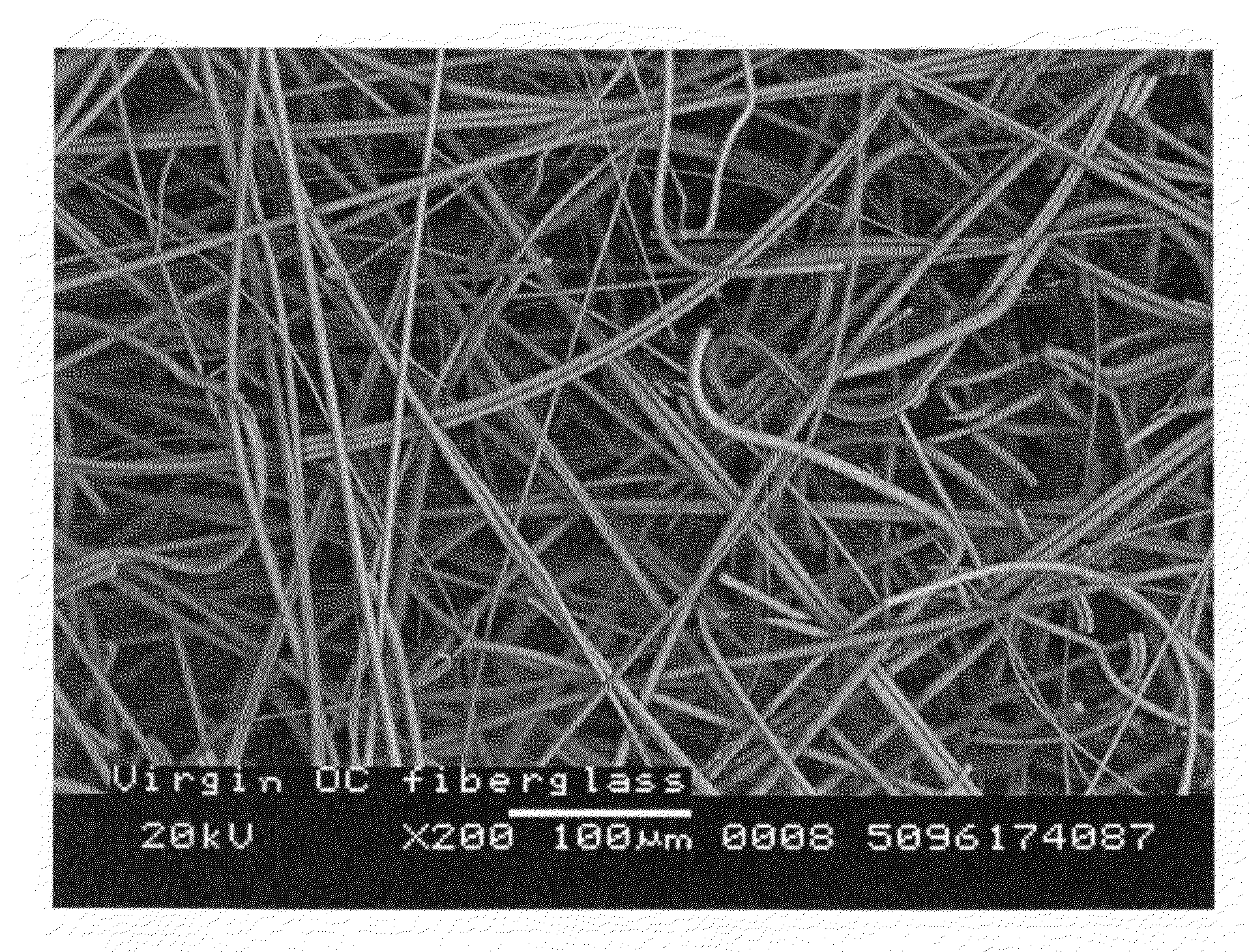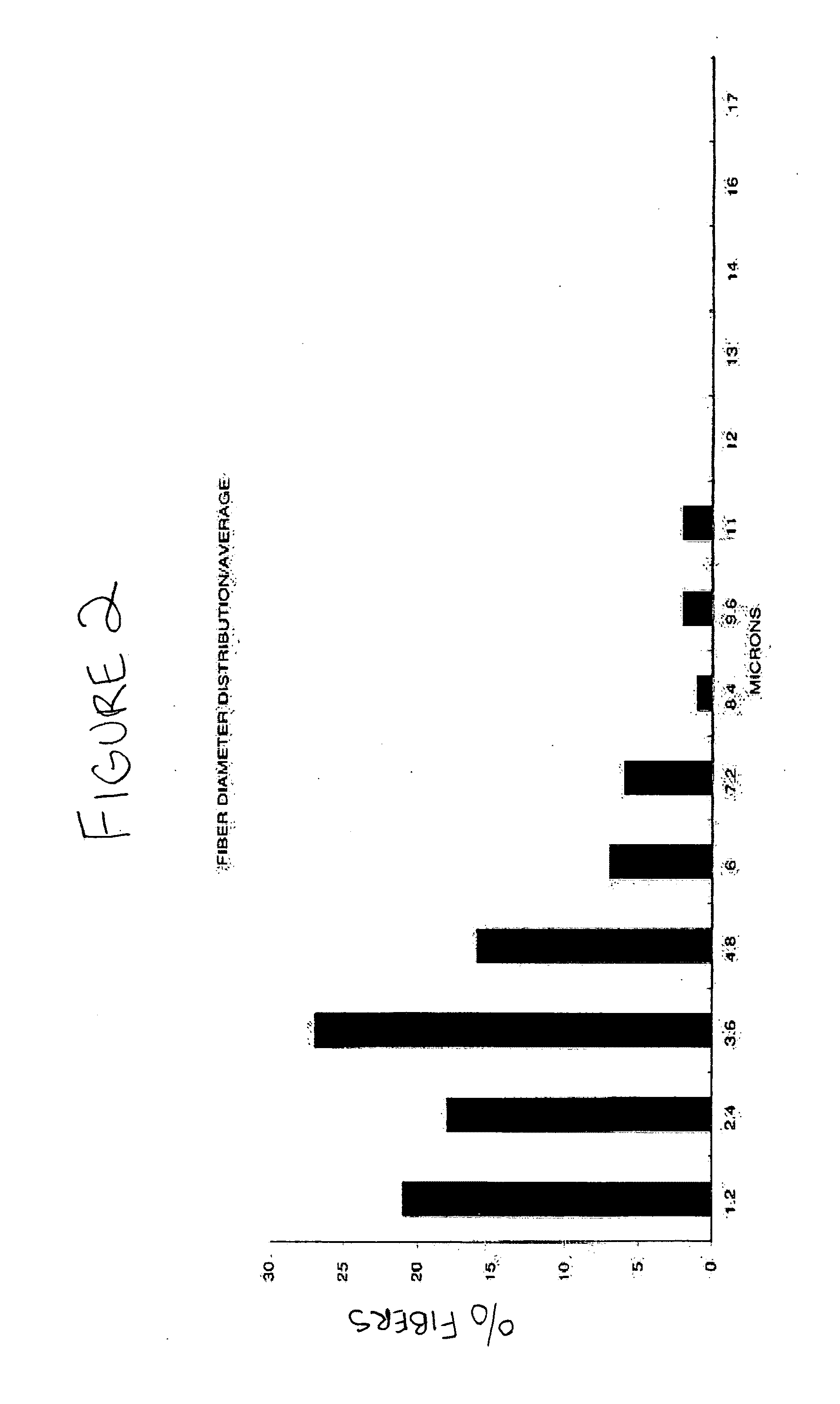Highly acoustical, wet-formed substrate
- Summary
- Abstract
- Description
- Claims
- Application Information
AI Technical Summary
Benefits of technology
Problems solved by technology
Method used
Image
Examples
Embodiment Construction
[0025]The term “wet-formed substrate” refers herein to a substrate which has been formed via a wet-forming technique. In addition, the term “rotary spun fibers” refers herein to fibers which have been extruded through an orifice.
[0026]A conventional wet-forming technique includes dispersing fibers an aqueous slurry above 3.5% solids consistency in a mix chest. Large impellors are employed to keep the fibers dispersed and render the aqueous slurry a homogenous aqueous mix. A typical aqueous slurry formulation includes approximately: 60% wheel spun fibers, 10% cellulose fiber; 25% perlite; and 5% binder (latex or starch). The aqueous slurry is subsequently pumped to the head-box of a Fourdrinier, or Oliver-type forming machine, and onto a mesh forming screen conveyor. The aqueous slurry is then dewatered, such as by free drainage. After free drainage, water can further be removed with application of vacuum and / or compression. The wet material is then cut into individual mats with high...
PUM
| Property | Measurement | Unit |
|---|---|---|
| Length | aaaaa | aaaaa |
| Percent by mass | aaaaa | aaaaa |
| Percent by mass | aaaaa | aaaaa |
Abstract
Description
Claims
Application Information
 Login to View More
Login to View More - R&D
- Intellectual Property
- Life Sciences
- Materials
- Tech Scout
- Unparalleled Data Quality
- Higher Quality Content
- 60% Fewer Hallucinations
Browse by: Latest US Patents, China's latest patents, Technical Efficacy Thesaurus, Application Domain, Technology Topic, Popular Technical Reports.
© 2025 PatSnap. All rights reserved.Legal|Privacy policy|Modern Slavery Act Transparency Statement|Sitemap|About US| Contact US: help@patsnap.com



